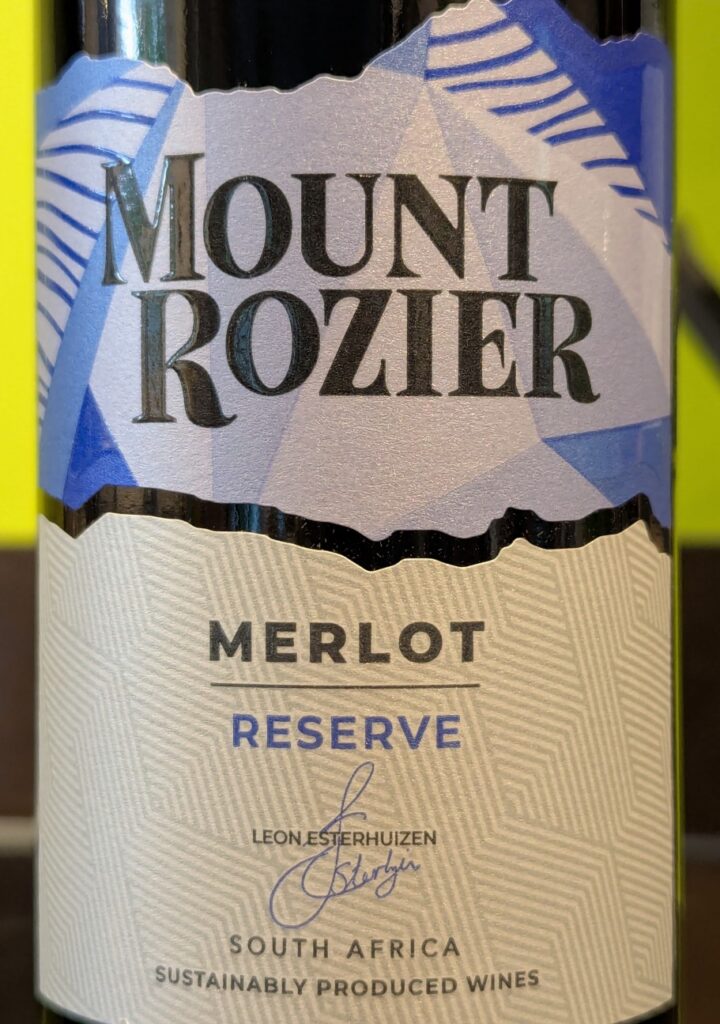
Mount Rozier Reserve Merlot comes from the foothills of the Hottentot Mountains in South Africa’s Western Cape, produced by the Mount Rozier winery. The estate traces its roots back to the early 1800s, when Annie Rozier, a flower merchant known for foraging wild blooms in the Schapenberg hills, established a reputation for creating natural remedies. Her connection to the land and the local community is still reflected in the estate’s values today.
Mount Rozier remains deeply committed to environmental stewardship, setting aside 30 hectares of its grounds for the protection of native plants and wildlife. This respect for nature underpins the entire Reserve range, combining a sense of place with a thoughtful approach to winemaking.
The 2023 Merlot sits at 12.5% alcohol and offers a cherry aroma with a bit of depth behind it. The taste is medium-bodied and soft in texture, continuing the cherry theme. There’s a slight savoury quality that supports the label’s suggestion that it pairs well with dishes like mushrooms or hearty stews. Unlike many tastings’ Merlots I have had recently, it is straightforward and as you might expect. It’s typicity is its strength. Approachable, easy to enjoy and unlikely to divide opinion.
Usually priced at £7.75 at Sainsbury’s, it was available at the time of writing for £7 and with a further 25% off as part of a multibuy deal, it came to just £5.25, a bargain.













